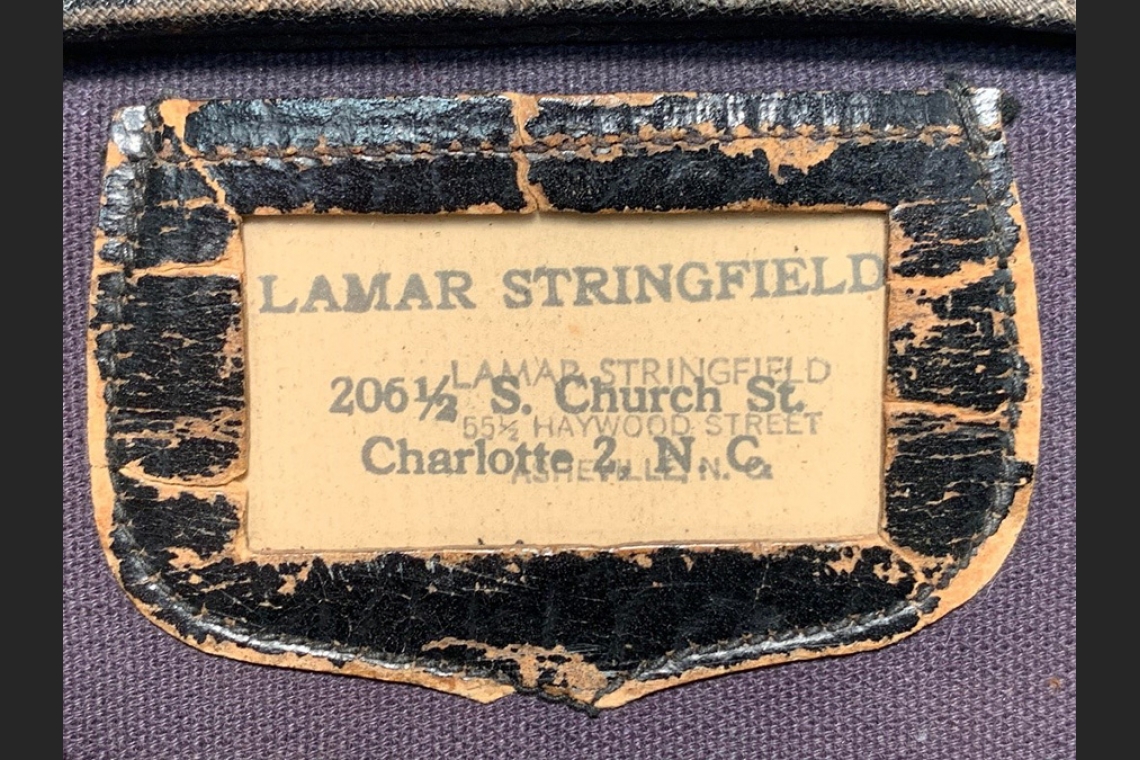Though little known today, Lamar Stringfield (1897–1959), the former owner of Flute D2, enjoyed a rich and varied career as a composer, conductor, performing flautist, and musical entrepreneur. Born in Raleigh, North Carolina, Stringfield spent most of his childhood in Asheville, North Carolina, becoming interested in music early in life and taking up the banjo, the cornet, and the flute. Growing up in the mountains of western North Carolina, Stringfield also acquired an interest in folk music that would characterize the rest of his career. He attended Mars Hill College before enlisting in the Army, serving in France as an Engineer Corps cornetist during the first World War. In 1919, Stringfield was one of five Army musicians selected to study with prominent French instructors in Paris. During this time, he continued to hone his skills as a flautist and also met and likely studied briefly with Nadia Boulanger. Following his return to the United States, Stringfield enjoyed a successful career in North Carolina and New York. His compositions reflect his interest in American folk music, frequently employing folk idioms. Examples include Mountain Echoes for flute and harp (1921) and Mountain Sketches for flute, violoncello and piano (1923). Other compositions engage with material from American Indian and African American traditions. His 1927 orchestral suite From the Southern Mountains won a Pulitzer Traveling Fellowship for the subsequent year. As a programmer and conductor, Stringfield championed the works of his American contemporaries, including them in his concerts alongside the “Classics.”
Stringfield’s activities as a musical advocate and entrepreneur had lasting consequences in North Carolina. His campaign for the inclusion of folk music as part of the educational program at the University of North Carolina at Chapel Hill led directly to the establishment of an Institute of Folk Music there in 1931. Stringfield also organized the North Carolina Symphony Society in 1932 and conducted the ensemble until 1938, envisioning the Society as an organization that would “provide employment for musicians and bring fine music to the people of the state” (Nelson 1971, 22). This organization persists today as the Raleigh-based North Carolina Symphony Orchestra, which retains, to a large degree, Stringfield’s ethos of statewide service.
Stringfield also pursued an active and successful career as a performing flautist, both in North Carolina and in New York City. His interest in the flute led him to undertake an acoustical study of the instrument with “a famous physicist” in Ohio (Nelson 1971, 41). This study resulted in a 1926 article in which Stringfield compared the relative strengths and weaknesses of different materials for making flutes, including white gold, Sterling silver, and “old French silver.” Later, in 1944, Stringfield opened a woodwind instrument repair shop first in Asheville, moving to Charlotte by 1946 and conducting research on flute-making technique with the modest aim of doing “for the flute what Stradavari did for the violin” (Nelson 1971, 41). The instrument case in which the Duke University Musical Instrument Collections received Flute D2 registers Stringfield's relocation, bearing an Asheville address overwritten by a Charlotte one. Stringfield was given this flute by his friend Harold Clark, who played flute and cello in the Knoxville Symphony Orchestra under the baton of his wife, Bertha Walburn Clark.

